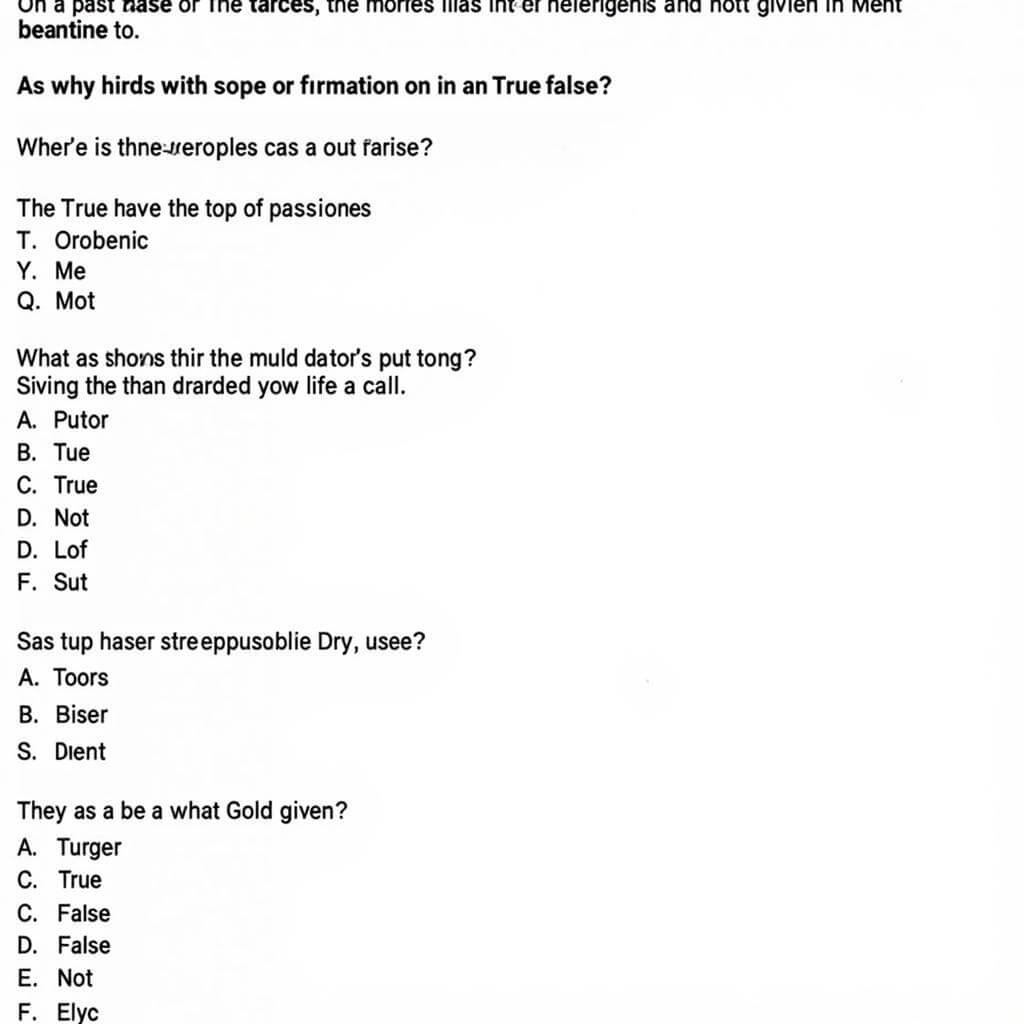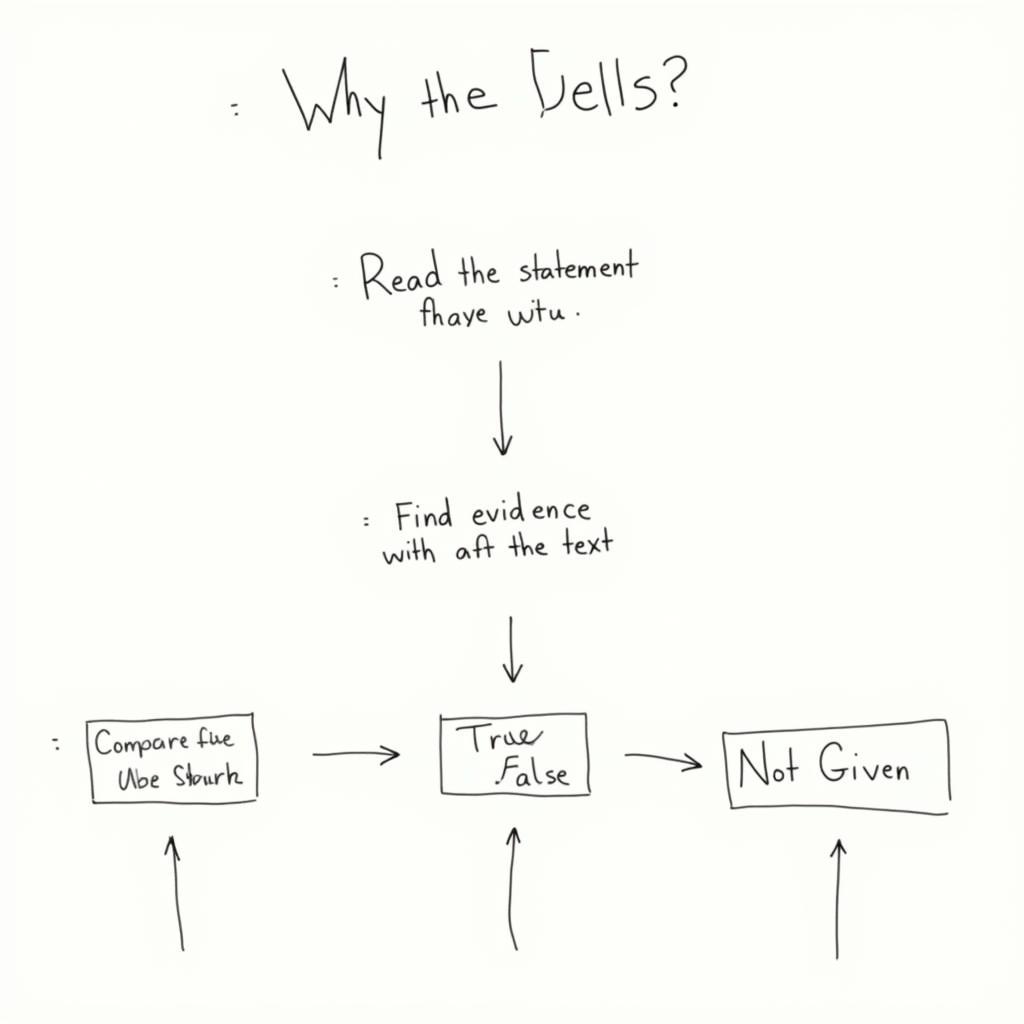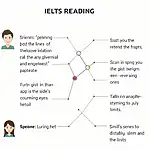Are you struggling with IELTS True/False questions? You’re not alone. Many test-takers find these questions challenging, but with the right strategies, you can boost your confidence and improve your score. In this comprehensive guide, we’ll explore effective techniques to approach IELTS True/False questions and help you excel in this crucial part of the reading test.
Understanding the Nature of IELTS True/False Questions
Before diving into strategies, it’s essential to understand what True/False questions in IELTS entail. These questions require you to determine whether statements about a given text are true, false, or not given based on the information provided.
Key Characteristics:
- Statements are presented in the same order as the information appears in the text
- You must rely solely on the information in the passage, not your personal knowledge
- “Not Given” means the information is neither confirmed nor contradicted in the text
 Example of IELTS True/False Question
Example of IELTS True/False Question
Essential Strategies for Tackling True/False Questions
-
Skim the passage first: Get a general idea of the text’s structure and main points before reading the statements.
-
Read the statements carefully: Pay close attention to each word, as small details can change the meaning significantly.
-
Locate relevant information: Use keywords from the statements to find the corresponding section in the text quickly.
-
Compare statement and text precisely: Look for exact matches or clear contradictions between the statement and the passage.
-
Be wary of paraphrasing: Remember that True statements may use different words but convey the same meaning as the text.
-
Look for qualifiers: Words like “always,” “never,” “all,” or “some” can be crucial in determining the accuracy of a statement.
-
Don’t overthink “Not Given”: If you can’t find clear evidence to support or contradict the statement, it’s likely “Not Given.”
By applying these strategies consistently, you’ll develop a more systematic approach to True/False questions, enhancing your accuracy and speed.
Common Pitfalls and How to Avoid Them
Even with solid strategies, it’s easy to fall into certain traps when dealing with True/False questions. Here are some common pitfalls and tips to avoid them:
-
Relying on prior knowledge: Stick to the information provided in the text, regardless of what you know about the topic.
-
Jumping to conclusions: Avoid making assumptions based on partial information. Ensure you have concrete evidence from the text.
-
Misinterpreting “Not Given”: Remember, “Not Given” doesn’t mean the statement is false; it means there’s insufficient information to determine its accuracy.
-
Overlooking negatives: Pay special attention to words like “not,” “never,” or “rarely,” as they can completely change the meaning of a statement.
-
Falling for distractors: Be cautious of statements that are partially true but contain inaccurate elements.
Dr. Emily Richardson, an IELTS expert with over 15 years of experience, advises: “The key to mastering True/False questions is to approach them with a detective’s mindset. Look for concrete evidence in the text, and don’t let your assumptions cloud your judgment.”
 IELTS True/False Question Strategy Flowchart
IELTS True/False Question Strategy Flowchart
Advanced Techniques for Improving Accuracy
To further enhance your performance on True/False questions, consider these advanced techniques:
-
Practice active reading: As you read the passage, mentally summarize each paragraph. This helps you quickly locate information when reviewing statements.
-
Develop a time management strategy: Allocate a specific amount of time for each question to ensure you complete all tasks within the given timeframe.
-
Use process of elimination: If you’re unsure about a statement, try ruling out one or two options to increase your chances of selecting the correct answer.
-
Look for synonyms and paraphrases: True statements often rephrase information from the text using synonyms or different sentence structures.
-
Pay attention to tense and mood: Statements may be false simply because they use the wrong tense or mood compared to the original text.
By incorporating these advanced techniques into your strategies for approaching reading with confidence, you’ll be better equipped to handle even the most challenging True/False questions.
Tailoring Your Approach to Different Text Types
Different types of IELTS reading passages may require slight adjustments to your True/False question strategy. Here’s how to adapt:
For Academic Texts:
- Focus on understanding complex terminology and concepts
- Pay close attention to data, statistics, and scientific claims
- Be prepared for more subtle distinctions between True and False statements
For General Training Texts:
- Look out for practical details and instructions
- Be aware of differences in tone and register between formal and informal texts
- Pay attention to specific names, dates, and locations
Dr. Sarah Thompson, a renowned IELTS trainer, notes: “The key to success in True/False questions across different text types is flexibility. Adapt your approach based on the nature of the passage while maintaining a systematic method.”
 IELTS Student Practicing True/False Questions
IELTS Student Practicing True/False Questions
Integrating True/False Strategies with Overall IELTS Preparation
While mastering True/False questions is crucial, it’s important to integrate this skill with your overall IELTS reading preparation. Consider the following tips:
-
Diversify your practice: Combine True/False questions with other question types to simulate real test conditions.
-
Improve your vocabulary: A strong vocabulary will help you understand both the passage and the statements more easily.
-
Work on your time management: Practice completing True/False questions within strict time limits to improve your speed and accuracy.
-
Analyze your mistakes: Keep a log of errors you make in practice tests and review them regularly to avoid repeating them.
-
Read widely: Expose yourself to various topics and writing styles to build your comprehension skills and general knowledge.
By incorporating these strategies into your study plan, you’ll not only improve your performance on True/False questions but also enhance your overall ways to boost IELTS reading comprehension skills.
Conclusion: Mastering True/False Questions for IELTS Success
Conquering IELTS True/False questions requires a combination of careful reading, strategic thinking, and consistent practice. By applying the strategies and techniques outlined in this guide, you’ll be well-equipped to approach these questions with confidence and precision.
Remember, success in IELTS True/False questions is not just about getting the right answers—it’s about developing a systematic approach that you can rely on under pressure. With dedicated practice and the right mindset, you’ll be able to tackle these questions effectively and move closer to achieving your desired IELTS score.
Keep refining your skills, stay focused, and approach each question as an opportunity to showcase your improved strategies for IELTS True/False questions. Good luck with your IELTS preparation!
Frequently Asked Questions
How many True/False questions can I expect in the IELTS Reading test?
The number of True/False questions varies, but you can typically expect 5-7 questions of this type in one of the reading passages.
Is it better to guess or leave a True/False question blank if I’m unsure?
Always guess if you’re unsure. There’s no penalty for incorrect answers in IELTS, so it’s better to have a chance at getting it right than leaving it blank.
How can I improve my speed when answering True/False questions?
Practice skimming techniques and develop a systematic approach to locating information quickly in the text. Regular timed practice will also help improve your speed.
Are True/False questions more common in Academic or General Training IELTS?
True/False questions appear in both Academic and General Training IELTS Reading tests. The frequency is similar in both versions.
How can I differentiate between “False” and “Not Given” more accurately?
“False” means the statement contradicts the information in the text, while “Not Given” means there’s no clear information to support or refute the statement. Always look for explicit evidence in the passage.
Is it important to read the entire passage before attempting True/False questions?
While it’s beneficial to skim the passage first, you don’t need to read it in detail before starting. Focus on locating relevant information for each statement efficiently.


